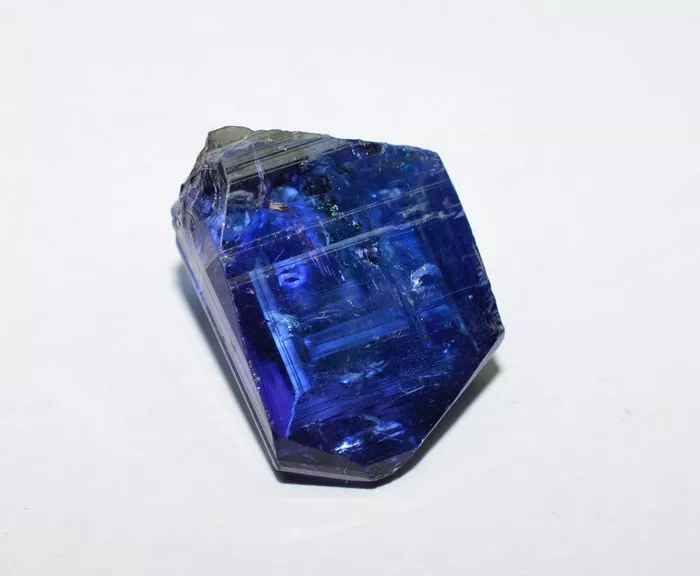Tanzanite, a mesmerizing gemstone celebrated for its vibrant blue-violet hues, holds a special place in the world of gemstone enthusiasts and collectors. Known for its rarity and remarkable beauty, tanzanite has captivated the imagination of jewelry lovers worldwide. In this article, we embark on a captivating journey to explore the unique characteristics of tanzanite, including its composition, physical properties, and the factors that contribute to its allure. Join us as we unveil the captivating story of tanzanite, shedding light on this exquisite gemstone.
Understanding Tanzanite Stone
Tanzanite is a rare and precious gemstone that belongs to the zoisite mineral family. It is composed of calcium aluminum silicate and owes its captivating blue-violet color to the presence of vanadium and trace amounts of chromium within its crystal structure. Tanzanite is renowned for its striking pleochroism, which means it displays different colors when viewed from different angles, ranging from deep blue to violet or even burgundy.
Physical Properties of Tanzanite
Color:
Tanzanite is renowned for its captivating blue-violet hues, which are its most prized colors. The intensity of the color can vary from pale blue to a deep violet, with the most saturated and vibrant gems being the most valuable.
Clarity:
Tanzanite stones can range from transparent to translucent. Inclusions or internal characteristics are common in natural tanzanite and can affect its clarity. However, when properly cut and faceted, tanzanite can exhibit excellent transparency and brilliance.
Cut:
The cut of a tanzanite stone plays a crucial role in enhancing its beauty and brilliance. Skilled lapidaries carefully cut and shape tanzanite to maximize its color, minimize inclusions, and showcase its unique pleochroic properties.
Carat Weight:
Tanzanite stones can be found in a range of sizes, from small to large carat weights. Larger tanzanites are rarer and, therefore, more valuable. However, the overall value of a tanzanite is influenced by a combination of its color, clarity, and carat weight.
Hardness:
Tanzanite has a relatively moderate hardness of 6.5 to 7 on the Mohs scale. While this makes it suitable for jewelry, it is important to handle tanzanite with care to avoid scratches or damage.
Origin of Tanzanite Stone
Tanzanite is found exclusively in the Merelani Hills of northern Tanzania, making it one of the most geographically restricted gemstones in the world. The Merelani Hills, located near the town of Arusha, are situated in the Manyara Region of Tanzania, and this small area—approximately eight square miles—is the sole source of tanzanite.
Mining Tanzanite
Mining tanzanite is a labor-intensive process that requires expertise and precision. The mining operations in the Merelani Hills are primarily conducted through small-scale, artisanal methods. Miners carefully extract the graphite schists containing tanzanite veins using hand tools and explosives. Once the material is brought to the surface, it undergoes a meticulous sorting process, where experienced gemologists and miners separate the tanzanite crystals from the surrounding rock.
Tanzanian authorities closely regulate tanzanite mining to ensure sustainability and protect the environment. Measures are in place to prevent unauthorized mining and promote fair trade practices. The government works with various stakeholders to educate miners about responsible mining techniques and environmental conservation.
Tanzanite’s Unique Pleochroism
One of the distinguishing features of tanzanite is its exceptional pleochroism. When light interacts with the gemstone, different colors can be observed from different angles. Tanzanite can display a vibrant blue color when viewed from one angle, a violet hue from another angle, and even a reddish-purple shade when viewed from yet another angle. This pleochroic phenomenon adds a captivating dimension to tanzanite’s beauty and makes each stone unique.
Tanzanite’s Global Appeal
Tanzanite’s remarkable beauty and limited availability have made it highly sought after by gemstone enthusiasts and jewelry designers worldwide. Its captivating blue-violet hues evoke a sense of elegance and sophistication, making it an exquisite choice for various jewelry designs, including rings, pendants, earrings, and bracelets. Tanzanite’s ability to complement both white and yellow metals further enhances its versatility and desirability.
Caring for Tanzanite
As a moderately hard gemstone, tanzanite requires proper care to maintain its beauty and protect it from damage. Here are some tips for caring for tanzanite:
Avoid harsh chemicals:
Tanzanite should be protected from exposure to harsh chemicals, including household cleaning agents and cosmetics. These substances can potentially damage the gemstone or affect its color.
Store separately:
When not being worn, store tanzanite jewelry separately from other gemstones or metals to prevent scratches or damage. Use soft pouches or lined jewelry boxes to protect the gemstone.
Gentle cleaning:
Clean tanzanite jewelry using mild soap, warm water, and a soft brush. Gently scrub the gemstone to remove any dirt or residue, then rinse thoroughly and pat dry with a soft cloth.
Professional check-ups:
Periodically have your tanzanite jewelry examined by a professional jeweler to ensure the gemstone is securely set and to address any maintenance or repair needs.
Conclusion
Tanzanite, with its captivating blue-violet hues and exceptional pleochroism, continues to enchant gemstone enthusiasts and collectors worldwide. Found exclusively in the Merelani Hills of Tanzania, this rare gemstone is celebrated for its remarkable beauty and limited availability. As we conclude our exploration of tanzanite’s unique characteristics, we invite you to embrace the allure of this exquisite gemstone, appreciating its captivating color, extraordinary pleochroism, and the story that lies within each tanzanite stone.


